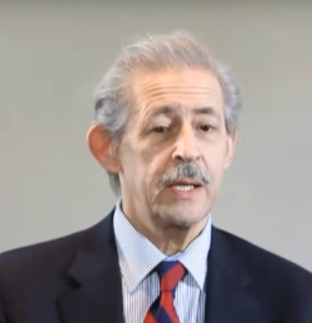From ambition to delivery - don’t just do something, stand there and think!
Joseph Lowe, HM Treasury, Head of Economics Branch
Good intentions and the enemies of benefit
Joseph set the scene by describing the common reasons why projects fail to realise benefits. All of which could have been avoided within a properly run appraisal stage! Typical attitudes are that business cases are costly bureaucracy that slow down progress and are only produced to get over a financial hurdle. The result is time over-runs, cost over-runs and under delivery, as evidenced by a survey into private sector project delivery by The Standish Group Report Chaos.
The Green Book and Better Business Cases
Joseph described how the Green Book is now internationally regarded as a world leading gold standard, and he continues to be asked to provide briefings, at least once a month, for a surprising variety of countries. This should be no surprise, as whatever the country and political climate, the essential challenge is about managing human behaviour and achieving the optimum compromise between ambition and reality – addressing the tension between belief, ambition, aspiration and drive on one side with objective evidence, analysis and resources on the other.
Joseph described the five dimensions of the five-case model for business cases:
- Strategic: Applicable – a strategic fit with business needs
- Economic: Appropriate – provides optimum public value
- Commercial: Attractive – to supply side and feasible with realistic risk management
- Financial: Affordable – sound funding model and within budget
- Management: Achievable – can be successfully delivered
Joseph talked about the success of the Better Business Cases initiative – an approach based on the five-case model, for all stages of the business case development process, complementing the Green Book guidance. Increasingly popular within both government and the private sector, it provides a joined-up structured approach to thinking, to avoid the pitfalls [the “unknown unknowns”]. It includes scoping and option selection, understanding and managing risk, contract design, delivery planning, financial approval and benefit delivery management. Better Business Cases™ certification is now available at Foundation and Practitioner level from APMG International - supported by a range of accredited trainers, and to date more than 5,300 people have been trained.
The culture required
In addition to formal approaches, Joseph stressed the importance of the right culture to develop workable best value proposals. This is characterised by a virtual team from the outset, working collaboratively across professional disciplines and geographic boundaries, using an iterative process that includes regular workshops to share and check information, consultation with stakeholders and the use of external reviews at key stages of development.
Learning from the past
It is clear to Joseph that many problems faced by projects today could have been avoided by learning from the past. Key failures are simply repeated, because people think that their project is different. There must be a compelling process [the business case process] that looks for the evidence, looks for experience.
We need clear transparent thinking, using research and evidence, to understand the problem, the current situation, the minimum core requirements for a solution, and SMART objectives to measure progress. We need to really understand the causal chain, and the way that changes will lead to benefits – as we cannot deliver benefits directly. At the beginning of the process there must be a rational and robust justification of why we expect the outcomes to follow from our changed outputs and why that is going to be beneficial.
Strategic appraisal
Joseph picked some key themes for the strategic appraisal process, focusing on common areas of weakness. Constraints need to be clearly understood, which could include legal, ethical, social standards and political. The dependencies beyond our control need to be explored, including external factors such as infrastructure. Critical Success Factors must take these constraints and dependencies into account, and need to focus on the key aspects for a solution: meet business needs, provide strategic fit, provide value for money, provide achievability, reflect supply-side capability/capacity and be affordable.
Joseph provided insight into the appraisal of options, using the perspective of service delivery rather than asset ownership – everything we do in government is about providing services. He stressed that unmanaged risk is the enemy of benefit delivery, and so options are required to show the identification and management of potential risk. Solution design is disaggregated into a series of choices for optimum service delivery, covering service scope, service solution, service delivery, implementation design, the funding model and affordability.

Joseph Lowe is Head of Economics Branch, HM Treasury. He is an Economist and Statistician whose career started in international non-ferrous metals and mining and which also spanned the UK gas and electricity industries; business consultancy; market regulation and competition issues. Since January 2006 he has worked as an economist in HM Treasury with responsibility for government methodology on planning and appraisal of investment and is the editor of the government guidance known as the Green Book and the Government’s business case guidance.
Write up by Ned Newton
Benefits Management SIG committee member
Joseph Lowe: Mindmap
Back to Benefits Summit 2017 mainpage
